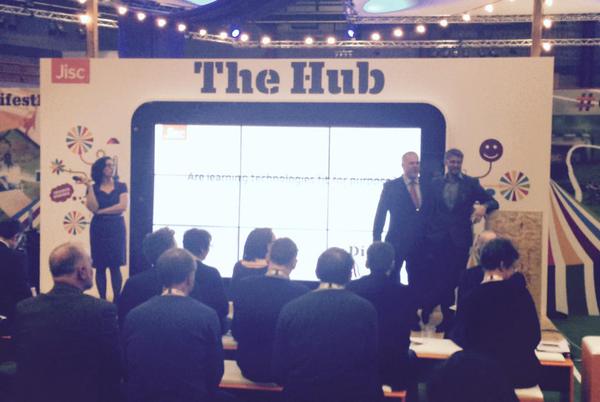Are learning technologies fit for purpose? @daveowhite and @DonnaLanclos debate… #digifest15 pic.twitter.com/GkAnvl6vkp
— Will Allen (@whaa) March 9, 2015
One of the previous times Dave and I argued on stage, thanks @whaa for the image, and of course to @Lawrie for that particular debate.
It’s nearly September that must mean I’m gearing up for another trip to the UK.
This time I’m heading over to attend ALT-C. Dave White and I have been invited to deliver the final keynote together. Do please let me know which of these you think we are either during or after the fact–we hope to have the Twitter stream up on screen as we speak.
I am lucky (Dave and I both are) to be invited to give these sorts of talks on a semi-regular basis. So I’m not exactly complaining when I say that the bios we are usually asked to submit are So Very Boring. The list of descriptors might be useful to someone trying to decide if they want to hear us speak–but I wonder, especially given the things that Dave and I have written about the importance of being human as an essential part of academic and professional credibility these days. Are lists that reduce us to the work we do really engaging?
So in the spirit of being human, and also having a bit of fun, we offer these alternative bios. Hope to see you at ALT-C in Warwick.
“Dave White would quite like your attention. He makes a habit of building castles in the sand not because he particularly likes castles, or even sand, but just to see what might happen before the waves come in. Despite having grown up near the sea he does not enjoy raw oysters, and would rather thank you very much for some macaroni & cheese. He is a big fan of the Internet, just not always in the ways you might think he is. He blogs, tweets, writes, speaks, and is generally quite Googleable.
Donna Lanclos was born in the desert and managed to name her son after a coyote. She has very little patience for bullshit, despite her American heritage. She is an anthropologist in all things and you really shouldn’t invite her to speak or write or work with you if you are unclear about what that means. Her love for shoes and cocktails has thus far not managed to get in the way of her work around digital and physical learning places and practices. She has lived on the prairies of North Dakota, the coast of California, and in the North Carolina foothills, as well as in the UK and Ireland. She is very happy to see you.
Donna and Dave have been working together since the early days of the Visitors and Residents research project in 2011. That was when they started their long-standing argument about whether there’s anything “old” in the cities of the United States. They began arguing in public with each other in about 2013 about education technology, the nature of the digital, and the role of the internet in the structure and content of academia. And also about how awful Dave’s shoes are. So far people remain willing to listen.”
